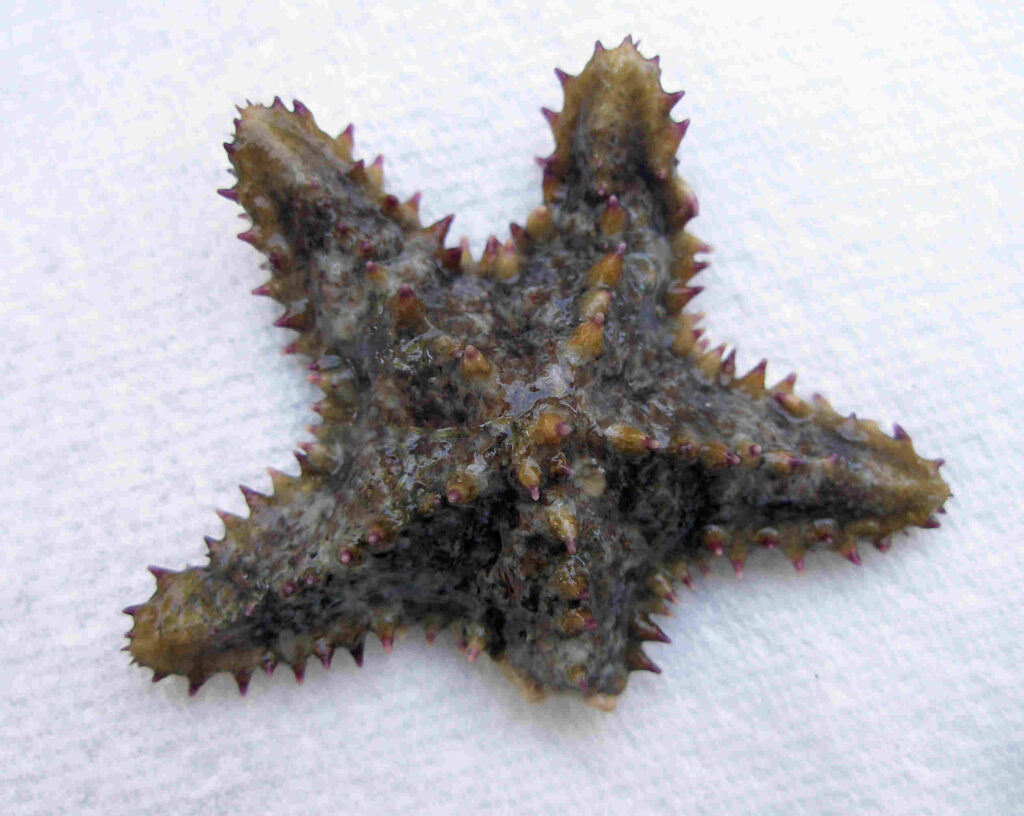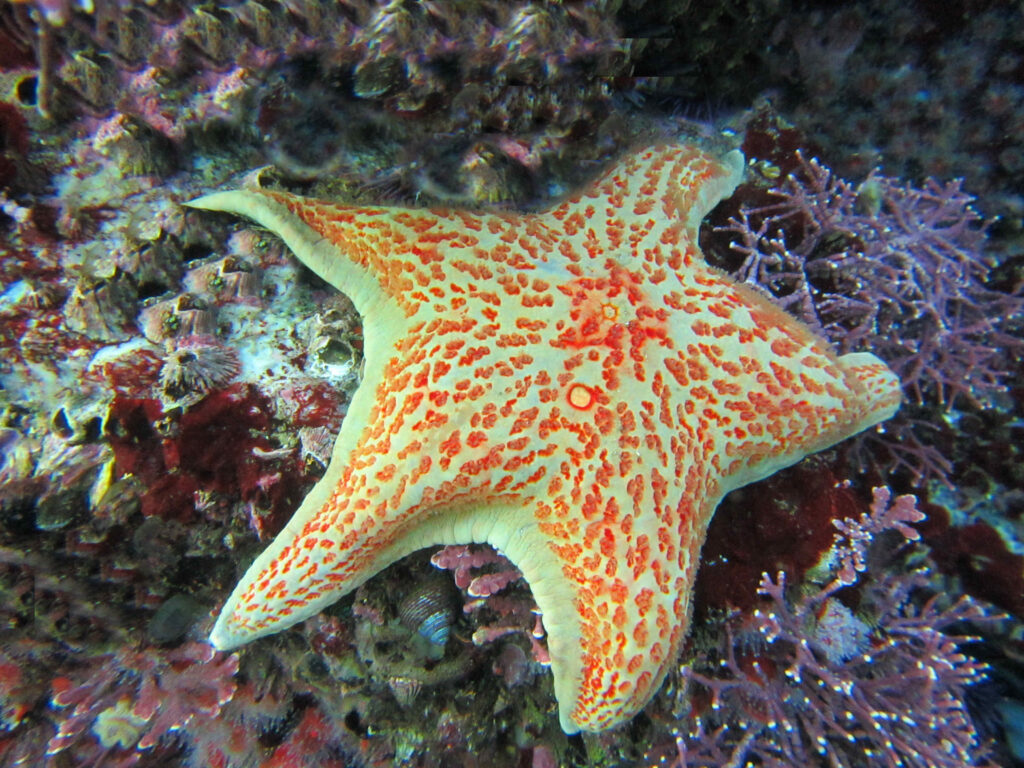Asteropseidae Family of Starfishes
Phylogeny: The Asteropseidae Sea Stars or Asteropsrid are members of the Asteropseidae Family of Sea Stars, and like Sea Urchins and Sea Cucumbers, belong to the Phylum Echinodermata. The Asteropseidae Family is small family with only six species. The Echinodermata are of great scientific interest because, via fossil records, they have been dated to the Cambrian Age (over 500,000,000 years ago) with 7,000 living and 13,000 extinct individual species. They are in the Class Asteroidae and the Order Valvatida. Asteroidea Sea Stars Ophiuroidea are the two major Classes of Astereozoans. Asteroideans are easily distinguished from Ophiuroideans as their arms have a broad attachment point where the arms join the disc and taper as they extend from the disc. Ophiuroideans have arms that are relatively the same thickness their entire length, giving them a narrow attachment point at the disc. The Valvatrida Order is characterized by the individuals having the presence of conspicuous marginal ossicles.
Distribution: Asteropseids reside on hard substrates including coral, rock, and man-made objects such as pilings. They are generally found in shallow water, with only a few species reaching depths up to 100 m (328 feet). They are found worldwide in tropical and temperate seas. There are two family members found along Mexico’s Pacific Coast.
Morphology: Asteropseids are characterized by having a flattened body that is unsegmented and cucumber, disc, sphere or star in shape. They have a thick skin on their aboral (dorsal) surface that usually conceals the skeleton. This skin may give the animal a rubbery, leathery, or velvety texture. The surface may have conical spines and/or pedicellariae. Some species in this Family have marginal spines. They have a wide central disc that is surrounded by five or six wide, tapering arms, to forty radiating arms (or rays). The disc contains most of the organs, with the mouth on the ventral side and the anus and madreporite (entry plate for the water vascular system) on the dorsal surface. They have a water vascular system, tube feet, and a complete digestive system, but they lack a head, eyes, nervous system, or excretory system. Some feed via inserting the stomach out through the mouth surrounding the prey, secreting enzymes to digest the food and then retracting the stomach when finished eating. Starfish in this Family may be brightly colored. Asteropseids reach a maximum of 30 cm (12 inches) in diameter. All Asteropseid have the ability to regenerate amputated limbs.
Ecosystems Role: Asteropseids feed by grazing on algae, bryozoans, and sponges, or they may be predators preying on hydroids, sea cucumbers, sea pens, other sea stars, sea urchins, and tunicates. In turn they are preyed upon by shore birds, crabs, fish, and other sea stars.

